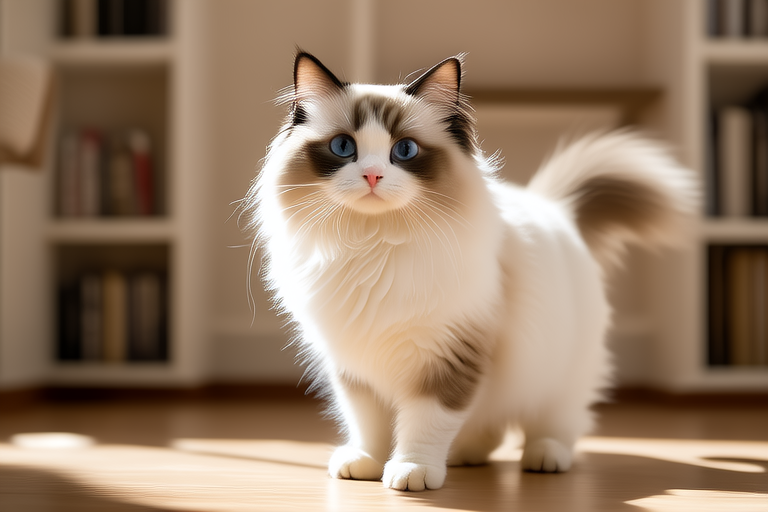Top 10 Reasons Why Turkish Angoras Are the Ultimate Companion Pets
When it comes to choosing the perfect companion pet, many factors come into play. From hypoallergenic qualities to intelligence and adaptability, Turkish Angora cats stand out for their unique traits that make them ideal companions. This article delves into the top 10 reasons why Turkish Angoras are considered the ultimate companion pets.
1. Hypoallergenic Nature
One of the most appealing features of Turkish Angora cats is their hypoallergenic quality. Unlike many other breeds, Turkish Angoras produce less of the Fel d 1 protein, which is the primary allergen responsible for triggering allergic reactions in humans. This makes them an excellent choice for individuals who suffer from cat allergies but still desire the companionship of a feline friend. Studies have shown that people with mild to moderate cat allergies often experience fewer symptoms when living with Turkish Angoras compared to other cat breeds.
2. Exceptional Intelligence
Turkish Angoras are known for their high intelligence, which sets them apart from many other cat breeds. They possess an innate curiosity and problem-solving ability, often figuring out how to open doors or cabinets to explore new areas of the house. Their intelligence also means they can be trained to perform tricks, respond to commands, and even use a litter box more efficiently than some other breeds. Owners frequently report that their Turkish Angoras seem to understand their moods and can provide emotional support when needed.
3. Playful and Affectionate Nature
These cats are incredibly playful, making them perfect companions for families with children or active adults. Turkish Angoras love interactive toys and enjoy games like fetch and laser pointer chases. Despite their playful demeanor, they are also affectionate and tend to form strong bonds with their owners. Many owners describe their Turkish Angoras as “dog-like” in their loyalty and attachment, often following their humans around the house and seeking out physical contact.
4. Adaptability
Turkish Angoras are highly adaptable, thriving in various environments, from bustling city apartments to quiet rural homes. They adjust well to changes in routine and can easily integrate into multi-pet households. This adaptability stems from their history as outdoor cats, which has equipped them with survival instincts and resilience. In fact, many Turkish Angoras enjoy spending time outdoors if given the opportunity, making them suitable for both indoor and outdoor living.
5. Elegant Appearance
The Turkish Angora’s striking appearance is hard to ignore. With their long, silky coats and large, expressive eyes, these cats are true beauties. Their coats come in a wide variety of colors and patterns, including white, black, blue, red, and tabby. The breed’s signature feature is its luxurious, flowing mane, which adds to its elegant and regal appearance. This stunning look makes them a favorite among cat fanciers and photographers alike.
6. Health and Longevity
Turkish Angoras generally enjoy good health and have a longer lifespan compared to many other cat breeds. With proper care, they can live up to 15 years or more. Regular veterinary check-ups, a balanced diet, and plenty of exercise contribute to their overall well-being. However, like all breeds, they may be prone to certain genetic conditions, such as hypertrophic cardiomyopathy (HCM). Early detection through regular screenings can help manage these issues effectively.
7. Vocal Communication
Turkish Angoras are known for their distinctive vocalizations, ranging from soft purrs to melodic chirps and trills. While not particularly loud, their communication style is quite engaging, often used to express emotions or request attention. Some owners find their vocalizations soothing, while others appreciate the interactive nature of these sounds. Learning to understand your Turkish Angora’s vocal cues can strengthen the bond between you and your pet.
8. Grooming Needs
Despite their long, luxurious coats, Turkish Angoras require relatively low maintenance grooming. Their coats are naturally shiny and tangle-free, requiring only weekly brushing to remove loose hair and prevent matting. Regular grooming also helps distribute natural oils throughout the coat, keeping it healthy and vibrant. Occasional baths may be necessary, especially if the cat spends time outdoors, but overall, their grooming needs are minimal.
9. Social Interaction
Turkish Angoras are social creatures that thrive on interaction with their human companions. They enjoy being part of family activities and often seek out opportunities to participate in daily routines. Whether it’s sitting on laps during quiet moments or joining in on game nights, these cats are always looking for ways to engage with their loved ones. Their sociable nature makes them excellent companions for those who want a cat that is more than just a background presence.
10. Unique History and Heritage
The Turkish Angora has a rich history dating back centuries, with roots tracing back to ancient Turkey. Legends and folklore surround this breed, adding an air of mystique and intrigue. Known for their agility and hunting prowess, Turkish Angoras were once prized by farmers for their ability to control rodent populations. Today, they continue to captivate hearts and minds with their charm and grace, embodying the spirit of their ancestral homeland.
Summary
In conclusion, Turkish Angora cats offer a unique combination of hypoallergenic qualities, intelligence, playful nature, adaptability, and elegance that make them truly exceptional companion pets. Whether you’re an experienced cat owner or considering adopting your first feline friend, the Turkish Angora’s ability to form deep bonds with their human companions, coupled with their minimal care requirements, ensures they will bring joy and companionship for years to come. By understanding and embracing the specific needs and characteristics of this remarkable breed, you can ensure a lifetime of happiness and fulfillment for both you and your Turkish Angora.
